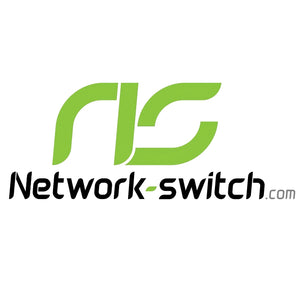In the modern data center and enterprise environment, 10 Gigabit Ethernet (10GbE) has become the baseline for high-performance networking. While fiber optics and Direct Attach Copper (DAC) cables dominate many deployments, 10GBASE-T SFP+ transceivers offer a compelling alternative: cost-effective, backward-compatible copper connectivity using RJ-45.
This article takes a deep dive into how 10GBASE-T SFP+ modules work, their benefits and trade-offs, deployment scenarios, and how they compare with other 10G technologies.
Overview
What is a 10GBASE-T SFP+ Module?
A 10GBASE-T SFP+ module is a small form-factor pluggable transceiver that allows switches and routers with SFP+ slots to connect to devices with RJ-45 copper Ethernet ports over Cat6a or Cat7 cabling.
- Form Factor: SFP+ (hot-swappable, compact)
- Connector Type: RJ-45
- Supported Standards: IEEE 802.3an (10GBASE-T), backward compatible with 1000BASE-T and 100BASE-T
- Distance: Up to 100 meters over Cat6a/7 copper
- Compliance: SFF-8431 & SFF-8432 MSA standards
Technical Architecture and Performance
PHY Layer Evolution
The efficiency of 10GBASE-T has improved dramatically over the years:
- 2006–2008: First 10GBASE-T PHYs used 90nm process, consuming >10W per port.
- 2012: 40nm PHYs reduced power to ~4–5W.
- Today: 28nm and below, with transceivers optimized to ~2.5–3.5W.
Digital Signal Processing (DSP)
10GBASE-T relies on DSP to overcome copper’s limitations:
- Crosstalk cancellation (NEXT & FEXT).
- Echo cancellation to separate transmit/receive signals.
- Adaptive equalization for maintaining stable links across varying cable quality.
Latency
- Fiber/DAC: ~300–400 ns.
-
10GBASE-T: ~2–3 µs per hop (due to DSP).
This difference may not matter for general workloads but is critical in latency-sensitive environments such as high-frequency trading.
Benefits of 10GBASE-T SFP+ Modules
- Backward CompatibilityWorks with existing Cat5e/6/6a/7 cabling. Auto-negotiates down to 1G/100M for legacy devices.
- Works with existing Cat5e/6/6a/7 cabling.
- Auto-negotiates down to 1G/100M for legacy devices.
- Cost SavingsCopper cabling is cheaper and easier to install compared to fiber. Ideal for short-to-medium runs (<100m).
- Copper cabling is cheaper and easier to install compared to fiber.
- Ideal for short-to-medium runs (<100m).
- Deployment FlexibilitySupports Top-of-Rack (ToR), Middle-of-Row (MoR), End-of-Row (EoR) architectures. Simplifies server and storage integration in existing copper-heavy environments.
- Supports Top-of-Rack (ToR), Middle-of-Row (MoR), End-of-Row (EoR) architectures.
- Simplifies server and storage integration in existing copper-heavy environments.
- Ease of UseRJ-45 connectors are familiar to IT staff. No need for expensive fiber patching skills.
- RJ-45 connectors are familiar to IT staff.
- No need for expensive fiber patching skills.
Trade-Offs and Considerations
| Feature | 10GBASE-T SFP+ | SFP+ DAC | Fiber SFP+ |
| Media | Cat6a/7 Copper | Copper | Fiber (SM/MM) |
| Max Distance | 100m | 7–15m | Up to 100km |
| Connector | RJ-45 | SFP+ | LC |
| Latency | 2–3 µs | <0.5 µs | <0.5 µs |
| Power Consumption | 2–5W | ~1W | ~0.7W |
| Cost Efficiency | High (reuses copper) | Medium | Higher upfront |
| Best Use Case | Enterprise & ToR | Short server interconnects | Long-haul, backbone |
Deployment Scenarios

Top-of-Rack (ToR)
- Servers with RJ-45 NICs connect to SFP+ switches via 10GBASE-T modules.
- Simplifies migration from 1G to 10G without rewiring.
Middle-of-Row (MoR) & End-of-Row (EoR)
- Efficient cabling when servers are 30–80 meters from aggregation switches.
- Reduces fiber requirements in brownfield deployments.
Enterprise Horizontal Networks
- Ideal for building LANs where existing Cat6a/7 cabling is already deployed.
Hybrid Networks
- Use copper (10GBASE-T) for shorter runs and fiber optics for long-haul links.
Thermal & Reliability Considerations
- Power draw (2–5W) means modules generate significant heat.
- Best practices: Avoid populating all switch ports with 10GBASE-T modules. Ensure strong airflow in dense racks. Consider industrial-grade (-40°C to 85°C) versions for harsh environments.
- Avoid populating all switch ports with 10GBASE-T modules.
- Ensure strong airflow in dense racks.
- Consider industrial-grade (-40°C to 85°C) versions for harsh environments.
Security and Interference
- Copper cabling is more prone to EMI (Electromagnetic Interference).
- Shielded Cat6a/Cat7 cabling is recommended for mission-critical data centers.
- Fiber remains the most secure medium, but copper with proper shielding is adequate for most enterprise applications.
Future Outlook
- 10GBASE-T will remain relevant in enterprise and SMB environments due to backward compatibility.
- Hyperscale data centers are moving to 25G/50G/100G fiber for higher efficiency.
- Multi-gigabit BASE-T (2.5G/5G) modules are gaining traction in Wi-Fi 6/7 backhaul and campus networks.
Frequently Asked Questions (FAQ)
Q1: What cable types are supported with 10GBASE-T SFP+ modules?
A: Cat6a: 30–50m; Shielded Cat6a / Cat7: 80–100m; Cat5e/6: Up to 100m at 1G/100M speeds
Q2: How much power do 10GBASE-T modules consume?
A: Typically 2.5–5W per module, compared to ~0.7W for fiber optics. This results in higher heat output.
Q3: Is 10GBASE-T suitable for latency-sensitive workloads?
A: Not ideal. Latency is 2–3µs per hop vs. <0.5µs for DAC/fiber. Use fiber or DAC for HPC, financial trading, or real-time analytics.
Q4: Can I use 10GBASE-T SFP+ in all switch slots?
A: Not recommended. High heat generation means switches may not support fully populating all ports with 10GBASE-T modules.
Q5: Where is 10GBASE-T most commonly deployed?
A: Data center ToR racks; Enterprise horizontal runs; SMB upgrades from 1G to 10G
Conclusion
The 10GBASE-T SFP+ transceiver is a flexible and cost-effective option for organizations looking to extend the life of their copper cabling infrastructure while transitioning to 10GbE.
While it cannot match the low latency and efficiency of fiber or DAC, it shines in environments where backward compatibility, deployment simplicity, and cost savings are priorities.
Enterprises should adopt 10GBASE-T where it makes economic sense, while strategically using fiber optics for scalability and DAC for ultra-low-latency workloads.
Did this article help you or not? Tell us on Facebook and LinkedIn . We’d love to hear from you!






 https://network-switch.com/pages/about-us
https://network-switch.com/pages/about-us









